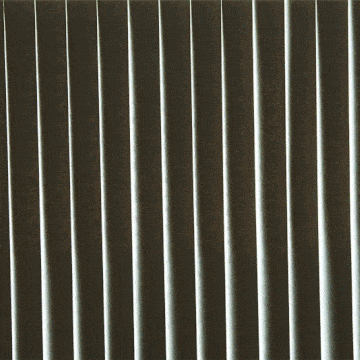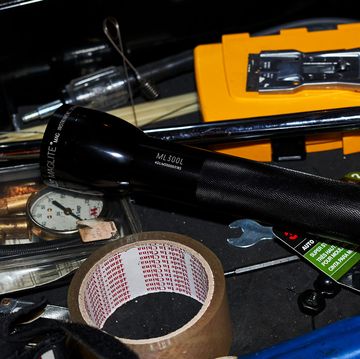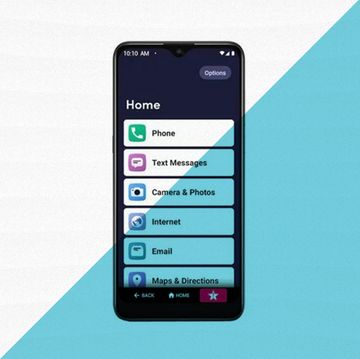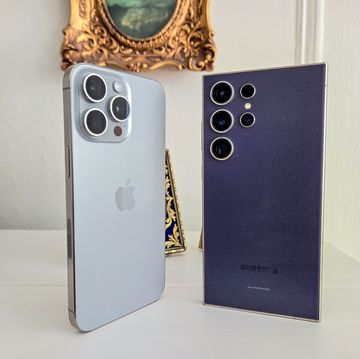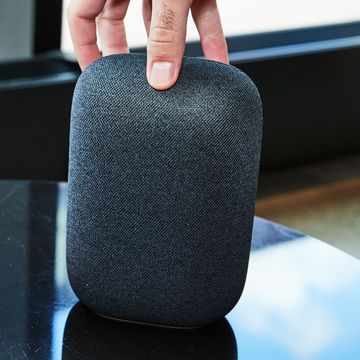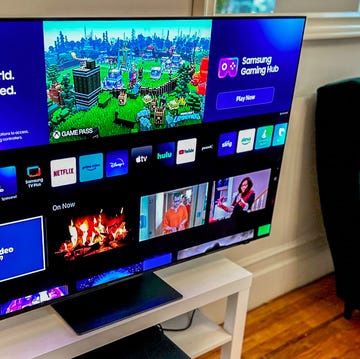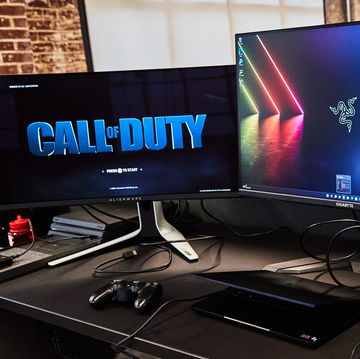Think about all the products that, over the last few decades, haven't changed at all. Many of them are in the house and, more specifically, in your bathroom. That's for good reason: Our basic anatomy hasn't really changed, and some of our upkeep practices, like hygiene and makeup application, aren't begging for improvement.
In the last few months, though, two designers have looked at dental hygiene with new eyes. They're trying to rethink the toothbrush, which—despite illusion of choice offered by myriad styles and color on display at your local drug store—hasn't changed much in decades. But just maybe there's a better way to brush.
What your glasses can teach you about your toothbrush
Sometimes, when there's a product we've assumed to be as good as it was ever going to get, along comes a company with a different vision to give us a different option.
Consider the case of Warby Parker. You probably knew that eyeglasses was an established industry where technology didn't change very quickly. You might not have known that the industry is presided over by a near-monopoly named Luxottica. That company makes most luxury eyewear: Bvlgari, Prada, Chanel, Tom Ford. Luxottica rules over Sunglass Hut and Lenscrafters. Sadly, it even manufactures brands I thought were independently operated and cool: Ray-Ban, Oakley, even the Italian classic Persol.
Finding out your cool specs are made by Luxottica is like finding out your favorite beer is made by InBev. And having one brand presiding over the industry is part of the reason why these pieces of plastic and glass can cost hundreds of dollars.
Then came Warby Parker, which designs its glasses in-house. It's known for its incredibly simple process: You get five pairs of glasses to try at home for five days. Pick a pair you like, send the rest back, and pay at the end – usually $95.
Warby Parker's service is a streamlined, surprisingly disruptive model that grew out of frustration with the established industry. Neil Blumenthal, David Gilboa, Andrew Hunt, and Jeffrey Raider saw an industry where one company ruled through business cunning, not innovation. It's reasonable to say that certain states are fighting Tesla's dealer-less sales model for similar reasons. When we, the buying public, are presented with an easier and cheaper alternative to expensive eyeglass frames, razor cartridges, or buying new cars from a dealership, we're going to take it.
The toothbrush problem
That brings us back to the toothbrush, and two companies trying to reinvent it. The first thing to understand is that the humble toothbrush is not an easy instrument to improve upon. Objectified, made by the same guy who did the brilliant Helvetica documentary, shows accomplished, professional designers wrestling with improving on the toothbrush's ostensibly perfect design.
But the toothbrush isn't perfect. Think about it: The handle doesn't really get dirty, so why do you need to replace it along with the head? Why can't you just replace the top part?
The fault in toothbrush design is directly connected to the disposability problem in our economy. With almost any consumer good, you want people to buy your product, use it up, and then buy another—as often as they're willing to tolerate. People buy one toilet seat, but they buy roll after roll of toilet paper.
If you're a big brand like Colgate, then, it's more profitable to sell consumers an entirely new toothbrush than it is to replace the bristles and head for less money. Simon Enever—the founder, CEO, and designer of the Quip toothbrush, one of the new upstarts—explains:
"Any brush that is made of two parts, the cost would be a lot higher," he says. "So there is the problem that the consumer expects to pay less, but the products end up costing more to the manufacturer, thus reducing their profit margins."
The upstarts
Here is Enever's alternative: Quip is a subscription service. You sign up, get a handle, and the company sends you a $4 replacement head every three months.(A survey done by Colgate-Palmolive says that Americans typically replace their toothbrushes every nine months. Which is gross).
The bristles on Quip brushes are uniform because those serrated models you see at drug stores actually don't accomplish anything. The bristles are soft because firm bristles can be too rough on gums and scrape away at enamel. Enever and his company consulted with dentists to arrive at those conclusions. The soft-bristle preference checks out, as does the three-month replacement cycle. (Hats off to Molly Beauchemin for her scrupulously researched article on the topic).
For production to be eco-conscious as well, Quip's replacement heads are shipped in tiny plastic capsules—thick plastic pods that soda companies take and expand to make 20-ounce plastic bottles.
The other alternative company, Goodwell, works on the same principle — though, as Enever notes, the brand's design came out three months after his original byDEFAULT prototype. Simply, Goodwell lets you replace the parts that need to be replaced, and keep the parts that can stay put. Goodwell claims its heads are biodegradable, though the bristles, made of charcoal, are not.
Both designs are clean and beautiful, which is what initially won my attention. An alternative function is useless if it's not attractive, especially if it's something you use every day.
The soft bristles and basic shape of both models actually check out. "[Toothbrushes are] such a competitive market, and everyone wants to come out with a different design," says Clifford Whall, former director of the American Dental Association's Seal of Acceptance division. Dental product manufacturers can send their wares to the ADA for testing. For all the insane designs the ADA sees — like the serrated bristles, the flexible heads — they're all tested against a basic, old-fashioned flat-top soft-bristle toothbrush.
"We call that our ADA standard toothbrush," Whall says. "Other designs might be better, but we haven't seen any." Removing plaque and spreading around the fluoride in your toothpaste (aka, proper brushing) comes down to time spent moving the bristles around your mouth. "It's still pretty boring stuff," Whall says.
Both models feel hefty, though the Goodwell's thinner handler makes it more maneuverable. Based on extensive research reports like this one from the Journal of Dentistry, I remain mostly unconvinced that electric toothbrushes are more effective than manual, except for the fact that they force you to brush longer with a timer. That's a factor if you, like me, hate the feeling of really intense vibrations on your teeth. Either way, Whall says, "It's really more about technique." Your teeth will be just as healthy if you brush with a manual brush the right way.
That's what makes the Goodwell and Quip enticing. Insane simplicity in an industry of excess. I hope Goodwell and Quip point to a future of products built for repeated use. It's refreshing to see that there are people who (successfully) redesign the products that we've accepted as being just good enough. If they create less waste, even better.
As Editor in Chief, Alexander oversees all of Popular Mechanics’ editorial coverage across digital, print, and video. He has been a science and technology journalist for over 10 years and holds a Master of Arts degree from the Columbia University Graduate School of Journalism. He was previously Technology Editor for Popular Mechanics and before that, a contributor to publications including the Wall Street Journal, Wired, Outside, and was a product tester and reviewer for The Wirecutter. He has been called on to appear on live and taped broadcast programs including Today and programs on MSNBC. He lives in Pennsylvania and rides a 2012 Triumph Street Triple R motorcycle.




